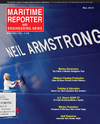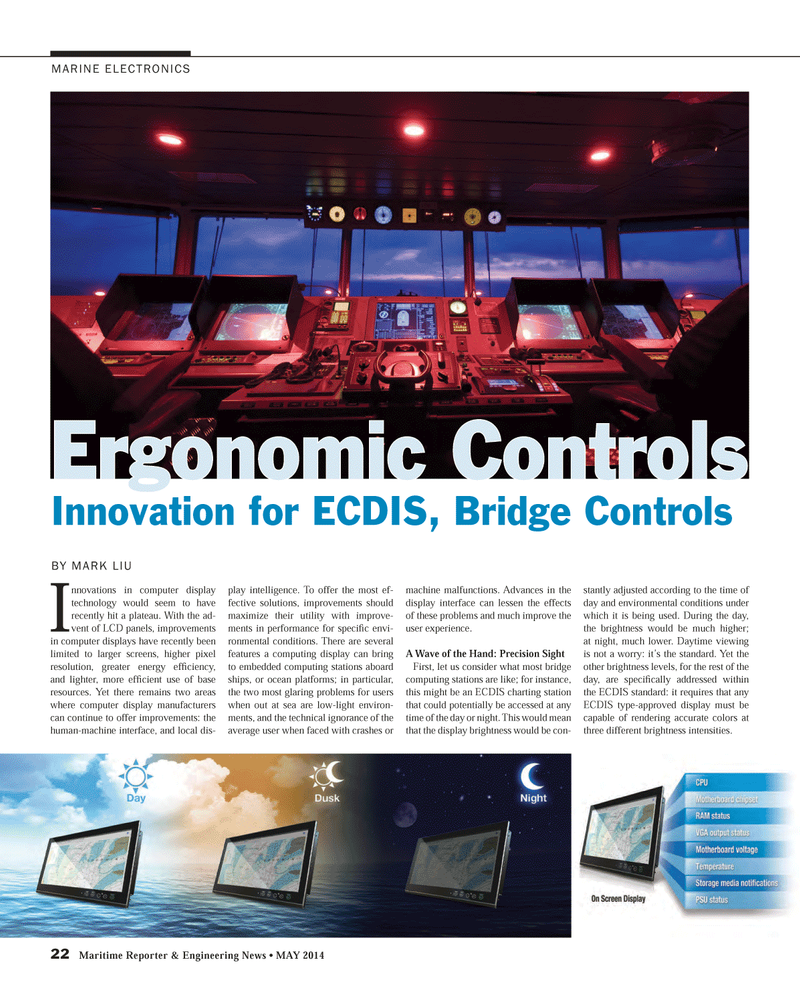
Page 22: of Maritime Reporter Magazine (May 2014)
Marine Electronics Edition
Read this page in Pdf, Flash or Html5 edition of May 2014 Maritime Reporter Magazine
22 Maritime Reporter & Engineering News • MAY 2014
MARINE ELECTRONICS
I nnovations in computer display technology would seem to have recently hit a plateau. With the ad- vent of LCD panels, improvements in computer displays have recently been limited to larger screens, higher pixel resolution, greater energy effi ciency, and lighter, more effi cient use of base resources. Yet there remains two areas where computer display manufacturers can continue to offer improvements: the human-machine interface, and local dis- play intelligence. To offer the most ef- fective solutions, improvements should maximize their utility with improve- ments in performance for specifi c envi- ronmental conditions. There are several features a computing display can bring to embedded computing stations aboard ships, or ocean platforms; in particular, the two most glaring problems for users when out at sea are low-light environ- ments, and the technical ignorance of the average user when faced with crashes or machine malfunctions. Advances in the display interface can lessen the effects of these problems and much improve the user experience.
A Wave of the Hand: Precision Sight
First, let us consider what most bridge computing stations are like; for instance, this might be an ECDIS charting station that could potentially be accessed at any time of the day or night. This would mean that the display brightness would be con- stantly adjusted according to the time of day and environmental conditions under which it is being used. During the day, the brightness would be much higher; at night, much lower. Daytime viewing is not a worry: it’s the standard. Yet the other brightness levels, for the rest of the day, are specifi cally addressed within the ECDIS standard: it requires that any
ECDIS type-approved display must be capable of rendering accurate colors at three different brightness intensities.
BY MARK LIU
Ergonomic ControlsErgonomic Controls
Innovation for ECDIS, Bridge Controls
MR #5 (18-25).indd 22 4/30/2014 2:33:51 PM

 21
21

 23
23
